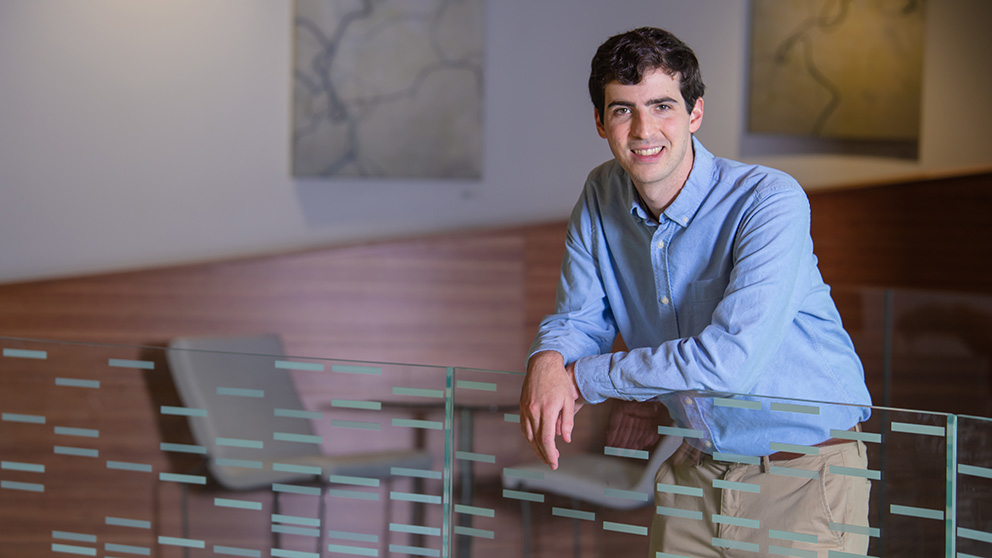 The Jackson Laboratory's Frederick Varn at The Jackson Laboratory for Genomic Medicine. Photo credit: Charles Carmada
The Jackson Laboratory's Frederick Varn at The Jackson Laboratory for Genomic Medicine. Photo credit: Charles Carmada
Assistant Professor Frederick Varn, Ph.D. seeks to uncover how the mechanisms of normal cells surrounding and interacting with brain tumors influence their development.
Dear future self
Have you ever wanted to travel through time? By creating a time capsule, you can. Filled with memories, sealed and stored to be opened on a future date, these projects are often created during primary education as a way to commemorate significant events or milestones. For Frederick Varn, Ph.D., his kindergarten project provided a prediction of the future.
“I opened a time capsule I had made in kindergarten after I finished college,” says Varn. “As I looked through all the mementos inside, I saw I had written down ‘I want to be a scientist when I grow up.’ I think pursuing science was always in the cards for me.”
Varn is currently an assistant professor whose research unites his love for both biology and computer programming. In 2018, Varn started as a postdoctoral associate in the laboratory of Roel Verhaak at The Jackson Laboratory (JAX), during which time he received an award from the Jane Coffin Childs Memorial Fund to further his study of how genomics and local immune activity may be playing a role in cancer resistance to immunotherapies. Varn has recently been promoted to assistant professor and is now leading the charge as his lab continues their exploration of cancer in a complex system: the brain.
Solutions in the surroundings
Varn studies brain tumors. More specifically, his research specializes in understanding what is occurring in the tumor microenvironment (the cells surrounding and interacting with the tumors). Like most tumors, brain tumors are formed when abnormal cells grow and divide more than they should. Malignant brain tumors are notorious for being difficult to treat and, despite surgical intervention and chemotherapy, almost always come back. But what makes these tumor types so resistant to treatment? Varn’s research suggests the answer may reside in the tumor’s microenvironment.
“Tumors are not just a collection of cancerous cells, but rather a collection of all the cells in the tissue that they form in and interact with,” says Varn.
Determining the function of non-cancerous cells is key to understanding more about how the cancer cells are manipulating their environment to avoid being destroyed. The normal cells living side-by-side cancerous cells in the tumor may be providing the tools the cancer needs to escape therapies. Varn and his lab are identifying the role of these non-cancerous cells in the tumor by analyzing their functions and activity.
As Varn begins his new position, he is focused on instilling the values he has received throughout his training to build a strong laboratory culture.
“Targeting the tumor microenvironment instead of the cancer itself could allow us to treat brain tumors more precisely,” says Varn. “By understanding the normal cells found in the brain and their interactions with cancer, we can try to change the behavior of those cells to slow cancer growth.”
Shaping a signature style
Varn has formed collaborations with clinicians to examine various cell types from human patient tissue. With several projects focusing on immune and neural cells in the brain, he is looking forward to strengthening his relationships between other research faculty and staff as well as navigating his new mentorship role.
“I have been fortunate to have had great mentors throughout my graduate and postdoctoral studies, and I hope to carry over the same open collaborative environment to my lab.”